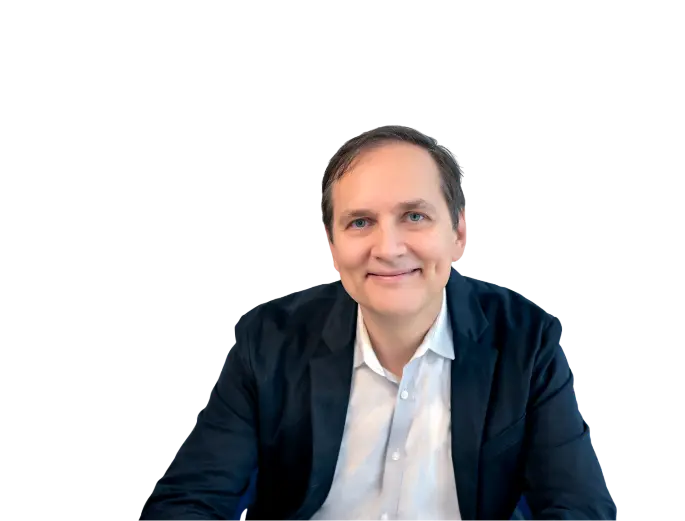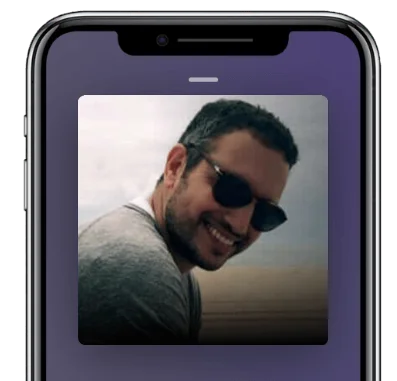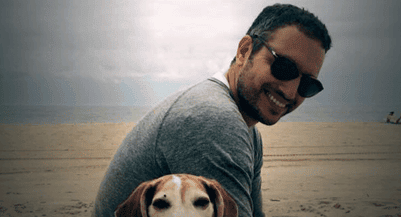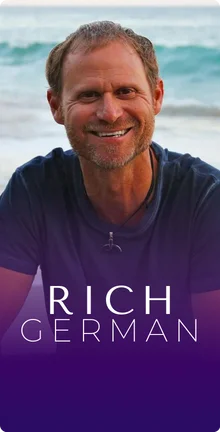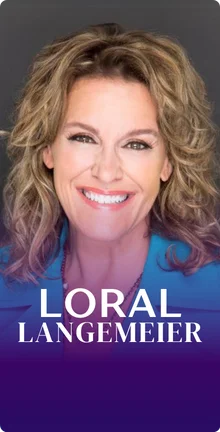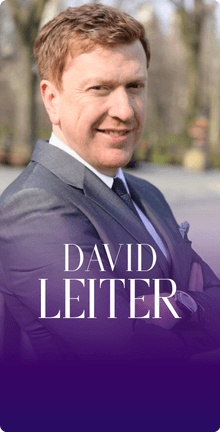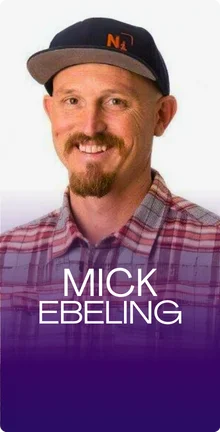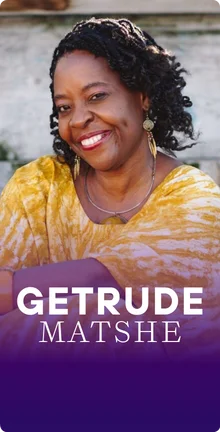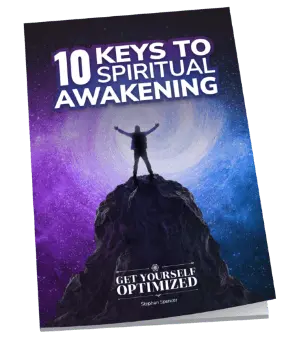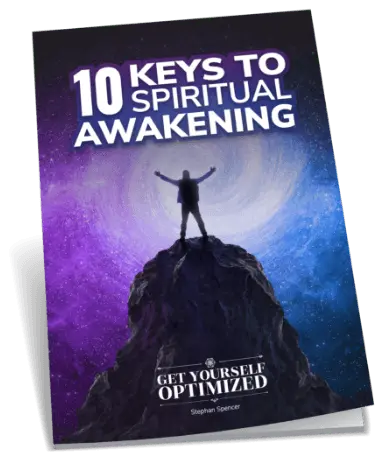In this Episode
- [03:17]We start things off by hearing about Dan’s background and how he made certain choices during his career, particularly as they relate to deciding between tech/financial and service opportunities.
- [05:08]Dan discusses the process of founding Impact Network, and how he chose to split his time. He then touches on the differences between running a nonprofit and a for-profit business.
- [09:39]What goes into trying to start a school or orphanage on your own — and is there a “school in a box” system?
- [12:32]Dan talks about sustainability once a school is built, both operational and financial.
- [13:32]Accountability is another challenge of doing work in a foreign country.
- [15:57]We hear more about the technology that Impact Network uses to keep track of various parts of its operations.
- [16:51]Why the focus on e-learning instead of using the state’s curriculum?
- [20:17]Dan clarifies that Impact Network follows the state’s curriculum, but does it in a more engaging way. He then emphasizes the importance of respecting the local culture and adapting your curriculum to each country.
- [21:48]We hear about the financial details of building and running a school.
- [24:46]Dan discusses the grant-writing and fundraising side of things.
- [27:07] Chefs for Impact is Impact Network’s fundraising event, and here Dan gives us more details about it.
- [28:41]At this point, Dan is mostly working on his for-profit things, because the nonprofit team is strong enough that he doesn’t need to be fully involved in the day-to-day matters.
- [30:26]How do you find partners?
- [31:38]Stephan shifts topics a bit, asking, “How do you go from startup to acquired company?”
- [33:11] – Dan speaks to his big “why” at Futurism.
- [35:38]We hear more about Futurism, including the initial challenge of driving people to the site compared to its current organic growth.
- [37:53]Dan talks a bit about Singularity University’s Executive Program.
- [39:28]What are Dan’s favorite exponential technologies, or the ones he’s most excited about? In his answer, Dan discusses augmenting intelligence in some depth. He then moves on to talking about augmented reality (AR).
- [44:22]What next step would Dan recommend people take?
Welcome, Dan.
Thanks, Stephan. It’s great to be here. Thanks for having me and again, thanks for being part of Impact Network. Stephan’s one of our board members and a big part of what we got going on.
Thank you. I just love what you’re up to and the difference you’re making for all these kids. If you weren’t doing it, I don’t know what they would do because there’s no one else out there that’s doing what you’re doing in those rural areas. It’s just amazing.
Yup.
Alright. Let’s talk about your journey from the startup world to having the kind of money that you could focus all this time, energy, money on a charity, and building your own instead of just writing out a check to somebody else’s.
A lot of people have this choice about whether to go into a career of service work or to pursue finances first.
Sure. As you mentioned, I graduated from the tech world and earned a Computer Science Degree in about 2000. Right before the bubble burst or the initial bubble there. Actually, out of college, I had this choice to make, I think a lot of people have this choice about whether to go into a career of service work so to speak, or to pursue finances first. I guess this is more of Gabe Zuckerberg’s model where you try to make a bunch of money and then donate it afterward or try to build a foundation afterward. For me I was very torn, I did end up moving towards the financial rod. While the boom was still booming, I had a job out in Austin, Texas for a tech company. And then shortly thereafter, I had an opportunity to do a startup with some friends from Duke, that was ShareFile. And then after that, one more in New York. I think at each of those junctures, it was a hard decision for me whether or not I wanted to do something good in the world and be of service. It was always a hard call whether or not to pursue the tech or financial opportunities versus the service opportunities. Right before my first company sold, I decided to make the leap, I had enough financial stability for me to leap into a no salary position with Impact Network.
How much of your time is split between Impact Network and futurism.com? What’s it been like since you founded the nonprofit? Starting up a nonprofit is a huge undertaking and it must have been a lot of hours, a lot of blood, sweat, and tears to get it to the point now where you have 10 schools operating.
Just a rewind of the order operations. I actually started the nonprofit as a part-time thing when I was still working at Yext. I was working at Yext full time, I was going to school for Google fairs to learn about what I had to do out in Rural Africa. And then part-time, I started the Impact Network with myself and three other people. It was very much of a volunteer effort and a small scale for a while. At some point, I ended up graduating from NYU and then leaving Yext to go full time as executive director at Impact Network. That was when things really took off and we went from one school to ten within year two. I guess I got to get into some of the more nuances. One of the things with nonprofits that I learned was different than for-profits, in the early days, it’s similar where you need to figure out what is your MVP, how do you iterate, what’s the team and so on and so forth. Then at a certain point, it becomes a little different than doing a startup or doing a for-profit, where it’s like once you hit a certain level of scale, let’s say in our case ten schools that are supported by friends and family and maybe we would do an event every year which is able to sustain the schools.
At that point, the bigger you get with the for-profit, the more money, in theory, you have to reinvest. But the bigger you get in nonprofit, the harder things become because your overhead becomes higher. What starts out as a “product” that you’re building ends up shifting more and more towards fundraising as well as in our case we’re trying to partner with the government of Zambia. That’s a completely different skillset from building a product or building a company where it shifts more toward fundraising and networking and almost politicking. At that point, I switched roles and one of the other co-founders Reshma, God bless her, she took over and has been able to carry it forward for the last few years. These days, to answer your question, I’m pretty much full time on Futurism and assisting where I can on a part-time volunteer basis with the nonprofit.

There are a lot of moving parts with the nonprofit and there are a lot of complexities that you don’t even think about. When I first approached you and we had a chat about what it was like to run a nonprofit and so forth at one of The Society intensives, I told you that I tried to start not a school but an orphanage on my own. I had no idea how difficult that would be. I thought, I’d do it in Vietnam, I just heard this lady tell a story about how she had founded an orphanage in Vietnam and it cost less than $30,000, less than the price of a car. I’m just like wow, I would love to do that. I went off and started to work on that. Long story short, I hadn’t realized that you had to bribe government officials and all sorts of crazy stuff. I was so out of my depth, I was like okay, I can’t do this on my own. Then, fortuitously you and I met and like woah, how about I just help you and wrote you a check, and then you built another school with that check and that was easy.
It was still gratifying for me, I didn’t get my hands as dirty as I wanted to because I really wanted to get in there and do stuff and I have yet to make a trip out to Zambia again to do any of the on the ground in the trenches sort of work. On that Tony Robbins trip that I had taken, immediately prior to us meeting, we’d done a contribution day and we were at one of the schools, not one of your schools but a different one that we were helping rebuild desks and doors and then painting classrooms and all that sort of stuff. It was really gratifying. I guess the bottom line here is what is involved, is there a way to figure out how to do this on your own? Is there kind of an orphanage in a box or school in a box sort of training program that’ll teach you to how to navigate all these land mines?
It is hard. I left because we are trying to put together a school in a box sort of model so that other people can learn from our mistakes but even the best school in a box that we could make every situation, every country, every locality is going to be different, you’re going to deal with different problems and it’s really, really hard. The best thing I could say to explain how difficult it is or one of the things I learned over time was whatever you’re planning on doing, if you’re looking at doing something in another country for instance like building a school or an orphanage or whatnot. Imagine wherever you live, let’s say I live in New York, let’s say I wanted to build a school in New York or an orphanage in New York. It’s not going to be any easier to build it over there than it is in New York. You get a little bit of a better exchange rate, maybe your money goes a little bit further. But at the end of the day, there are a million things that go into running anything, a business or a school or an orphanage. All those little things, they just require so much iteration, so much TLC. It’s one thing to cut the initial check, or build the initial building, but then you have all these humans there and all these people that you’re serving and all of these things that go right and wrong on a daily basis.
When we first started Impact Network, our original business model or our plan was we were going to run these schools.
It’s kind of messy, and so it’s difficult. As an example even going in with Impact Network, I don’t even think I necessarily explain exactly what we do. Right now, Impact Network, we’re just focused on e-learning in the sense that we provide the teachers out there in the schools with tablets and lesson plans and projectors and they can deliver curriculum. That’s for us what we found to be the most efficient way. But even with that, we have to deal with all sorts of hirings and firings and things going wrong. But when we first started Impact Network, our original business model or our plan was we were going to run these schools and at the same time because we were the only source of electricity, because we have solar on the school, we were going to sell that for people to charge their phones and try to do this hybrid business/school and we very quickly learned that mixing a business and a school is like oil and water. It was too hard to do and we quickly learned from that mistake and turned it into a nonprofit. Yeah, it’s hard. There was nothing easy about it and in fact that you’re in a foreign country with a different culture makes it that much harder.
What can happen is you fund the initial building of a school or an orphanage or a hospital or something and then it’s not setup to continue self-sustaining and operating, and then it becomes this empty building after a while and then it gets eluded, and then it’s just shambles.
Part of sustainability is, probably the easiest part is the financial piece, even though that’s not easy either. But then also there’s this kind of operational sustainability, one of the big things that we do apart from you learning is that we have for each set of 10 schools, we only have 10 right now although we’re about to expand into another 35 schools because we just got a big grant, or we’re about to, is we have a group of four or five administrators. They ride on motorbikes and they’re busy just checking in on each school on a daily basis or weekly basis to make sure they have supplies, that people are showing up, etc. That layer of accountability is really critical to make the thing work.
How do you get the right people to keep everybody accountable because if the people who are keeping everybody else accountable aren’t accountable themselves, are not trustworthy and you’re half a world away?
It’s a challenge. That’s one of the other challenges if you are going to do work in a foreign country is that there’s huge dirt of human capital, especially in the rural areas. It’s not like you can just put an ad on CraigsList and you’re going to get good people, we got lucky because we had one cornerstone individual and then he knew some people that were trustworthy. Having at least one cornerstone to build around it is really critical. As far as keeping those people accountable, that’s an ongoing process as well. In the beginning, we tried a lot of different systems. We tried having them report every day on email and that didn’t really work, and then we tried calling them, then we ended up getting a Blackberry at the time. It’s an ongoing process of accountability but it’s not easy.
Do you have a whole bunch of these processes or org charts and checklists and everything all figured out now?
That’s what a lot of the school in the box piece of it is. Here’s the checklist for every time you go to a school, make sure that the door’s on the hinges and there’s chalk for the chalkboard, etc. We’re continuing to add to that process. One of the things we’re testing right now, one of the challenges on these areas, even with simple things like attendance. We’ve had a hard time keeping track of the kids because a lot of kids have the same names. It’s hard to keep track of who’s who. We started using a fingerprinting system recently and we’re testing that to identify the kids and that seems to be working well so far. All these little things, you have to put processes in place.
All these little things, you have to put processes in place.
Do you use some sort of technology for documenting all these processes? I’m starting to go through this process myself with my own company. Rather than having to onboard people with giving them some of the same training that I’ve had to give before, at least I’m recording the trainings now so that goes into a training library but documenting everything in form of checklist and all that sort of stuff, I’m looking at using tools. There’s a bunch of them out there. Way We Do is the one I ended up using. Are you using anything like that?
Initially, we used a lot of Google Doc sort of things and we use that at Futurism as our go-to but we’ve got into the point of maturity now that Impact Network is about seven years old, we actually have a PDF playbook that has everything in it in a very orderly fashion and we continue to use that and update that.
I looked at Way We Do, I looked at Methodologee, I don’t know if you’ve heard of that company. Seems helpful to have some sort of framework to put all the checklists and org charts and all the training videos and all that in some sort of scaffolding that already exists. Why the focus on e-learning and why not just build schools, bring in teachers, and then just use the state’s curriculum?
There’s a couple of things. One methodology, education-wise in these rural areas. Just to give you a little context, the current state of affairs in a country like Zambia and some of these other countries in rural Africa, which I can speak to. I’d say about roughly a third of students are totally out of school. The other two-thirds are in school but the schools are not very high quality at all. There’s a mix of situations going on. What we decided to do is focus on the problem of the kids that are completely out of school. In those rural areas, if we weren’t there at your point earlier, what they would have to do if they did it all is take a really, really long walk. You’re talking about 5km or 10km to the nearest school, government school. A lot of kids either aren’t willing or aren’t able to make that sort of track. We build in a much more local environment. And then what we’ve been doing with the e-learning is just because we build a building, that doesn’t necessarily mean that the government has enough teachers to staff it.
What we decided to do was try to find people that were in that local town because in the local towns there is some human capital and there are high school graduates who have graduated but maybe they don’t have a job, maybe they’re just doing systems farming but they’re literate. With the e-learning, what we were able to do for the teachers specifically first was provide them with a tablet which had each lesson plan, math, day one, lesson one, day two, lesson two. They can read through that the night before and present it the next day and of course, we have to give them a little training on how to present to the kids and things like this. Essentially, we were able to take these local people, provide them with a job and a sense of pride. Also, they know the local contacts. A lot of times, the government would place a professional teacher from the capital into these rural areas where they don’t really want to be, they don’t know anybody, and they’re also quite expensive. Our school is actually run at about a third or half the cost of the government school.
E-learning is to empower the teachers and the local people to become teachers.
E-learning or the way we see it is to really empower the teachers and the local people to become teachers. Now, we’re starting to move towards things that are a little bit more complicated which is using the e-learning to get the kids more involved in a one-to-one basis with the tablets, quizzing themselves, tracking their progress, and things like that. But from just an operational standpoint, it was much easier to start with the teacher projecting on the wall some sort of game or lesson, and the kids could go up one at a time in the front of the class and point to the different things. Because there’s a lot of complexity involved with having 10 tablets floating around the classroom, kids trying to share, login, logout, and then breaking, it gets complicated really fast with whatever you do out there, we’re gradually, slowly implementing more and more e-learning as we go.
The state’s curriculum is not as advanced in terms of using technology, using e-learning. Do you see an opportunity there to maybe become the state curriculum or provide that?
To be clear, we’re actually working with a partner, iSchool, although they’re rebranding, on the curriculum piece. It does follow the state curriculum, however, it does it in a way that’s much more engaging and interactive and activity-based. Instead of teaching math or some traction on the chalkboard, they still do that but they also teach it using rocks that you’re moving around or maybe you’re playing a game where the kids are standing in a row and then two people step out or something like that. The way that it’s taught is just different and it’s also augmented by the e-learning and the tablets that we’re able to project on the wall. It is important to have this hybrid where you’re still respecting the culture and what the government wants to teach to the people. I think that varies from country to country. While that does provide a challenge because you have to then adapt your curriculum to each country and you think that’s part of respecting the cultural norms out there.
You said that it’s a third to a half the cost for you to run a school versus the state to run a school. How inexpensive is it? I wrote out a check, I’m happy to share what the amount is just to give listeners a sense of the scale of things. $25,000, basically paid for the building of a school and operating it for the first year. That was my understanding, something along those lines.
The first and a little some. Basically, it runs for at least about $10,000-$15,000 construction-wise. And then our ongoing cost are about $3 per student per month. It’s like $3, $3.5. In that cost, we actually encapsulate everything. We encapsulate the cost of the teachers, the cost of the gasoline when our managers ride around on their motorbikes, we calculate the cost if the roof blows away and we need to replace the roof five years from now. We can break that down and wrap that in there. Really, it’s an all-in cost of only $3 or $4. That seems really cheap and it is, but that being said, the other half of that from a non-American perspective, is the government out there and in a lot of countries, they’re doing the best that they can, they’re actually putting a large component of their, like people talk about corruption a lot but really, the biggest challenge is financial. Let’s take a country like Zambia, they actually don’t have that much tax revenue.
One of the things that we’re trying to do is actually make it cheaper for the government to build and run these schools.
They have some industries like copper mining and what not but most of the people there, they’re subsistent farmers or maybe they have a shop that they sell some things but it’s a gray market situation. Not everybody pays taxes there like we do in the US. In the US, we pay taxes and then the government turns around and they take some of the money and they spend whatever it is per se like $10,000, $20,000 per child on education. In Zambia, the government doesn’t have the luxury of that tax base but they are expected to provide a really good education for everybody that’s what the UN tells them to do. One of the things that we’re trying to do is actually make it cheaper for the government to build and run these schools. We hope that we can partner with the government in the next few years and make their dollars stretch a little bit further. That’s the bigger picture and macroeconomic view of what we’re doing. It’s a little less sexy than seeing the happy, kid’s faces but we also think about things at that scale.
The sausage has to get made and it doesn’t look so pretty when you’re in the factory. Speaking of making everything run and having the funds to do all this, you have to become an expert not just on being on the ground, building the schools and operating it, hiring and retaining staff and everything but you also have to become an expert at grant writing and running fundraisers like you just had the Chefs for Impact event which I heard went really well. Let’s talk a bit about the side of it, the grant writing, the fundraiser type events. How’s all that work?
It’s a hard thing. It’s a challenge. For grant writing, in particular, you’re competing against a lot of other worthy causes. I would say going back to what I said before, the bigger you scale up if you’re doing a product or a service which in our case is the schools, the more overhead you have. What ends up happening in the beginning, let’s say you’re spending 100% of your dollars on your product or your service, overtime that gets bigger and bigger, let’s say if we had 20 schools or 30 schools, now you have to spend more and more of your time on fundraising. That’s a real challenge and systemic problem if you’re thinking about starting a nonprofit.
Some people don’t want to give money to fund the overhead, they just want to give it to go directly to the children or whatever, and then that gets earmarked.
It’s hard too. For us, to run all 10 schools per year, some are around $100,000. We are able to do that with our annual fundraiser, but the crazy thing is because the money goes so far out there, just to have an office in Brooklyn or to have one, I think we have two employees right now, but just to have that, all of a sudden you’re at 50-50. You’re spending 50 over there and 50 over here. It used to be the case that if you’re spending any more than 10% on overhead, it was very, very much frowned upon. Now, luckily people have come to understand that it’s case-specific but that’s also a really big challenge. Going back to the fundraising piece, it’s challenging. A lot of organizations only do one or the other, they only focus on the product and service. Or if you look at like charity water or something like that, they’re not actually drilling the wells necessarily, they’re just raising the money to help support the people that are drilling wells which is strictly a fundraising and marketing engine. I won’t say that’s easier but you’re not trying to do two things at once, which is another thing to think about.
It simplifies it a bit. Let’s talk about your big fundraiser shifts for Impact, what went into that? How many years have you been running it? What is it exactly? What’s the experience like?
The idea is that we have a five or six-course meal with a different chef from around New York. One chef from each restaurant, they prepare a different course and it’s just a gala situation and it’s been really fun. The first year my wife actually helped put it together and that was a challenge to get everyone on board the first time around. Then the second time, it gets a little bit easier because you learn your lessons. Some of the chefs that we had were able to come back the second year and so on and so forth. The challenge now, we just finished our sixth year and every year has been awesome but the challenge is really keeping it fresh. You want to keep it interesting for everybody so that it’s just not the same thing when they go back every year, as much as they love supporting the school and the cause. Last year, we brought our director from Zambia. It’s his first time in the US, he was our keynote speaker. This year, we had a virtual reality experience which was really cool. I can give you a link to that, if you want to put that in the notes. We filmed this little virtual reality video over in Zambia and we had cardboard glasses for all the people that attended this year. We just have an auction and some musical thing. Again, going back to what I was saying before, it ends up being a lot of work. It becomes a big piece of what you do, the fundraising piece.
You want to keep fundraising events interesting for everybody so that it’s just not the same thing when they go back. Share on XYou’re spending roughly what percentage of your time on a nonprofit these days versus your for-profit stuff that you’re doing?
I would say at this point, mostly I’m working on the for-profit stuff. Thankfully, we have enough of a team, a robust enough team. I don’t have to be involved so much in the day to day anymore. To get to that point, it took a while, but we finally managed to get there. It’s still a challenge. Just as far as if you’re thinking about starting a nonprofit, I would say that there are few ways to look at it in general. The way I look at nonprofit is they serve a specific function in society versus for profits. For things like job creation or poverty or hunger, I think a lot of that can be done these days on a for-profit side. On the nonprofit side, I think what you’re doing essentially is providing the service where the government is either not providing it or they’re not innovating enough in it. The big areas are disaster relief is a big one, it’s a big emergency health care if you look at somebody like Partners In Health that’s building hospitals, that’s a critical area. And then education is another one of those, there might be some other areas too but I think those are all areas that are normally or should be in theory under the purview of the government but if you can come up with a better solution or a more efficient solution and then partner with the government, whether it be in international or even a city government. Let’s say you have a great after-school program in New York, it’s really innovative and then you want to partner with the city on it. That’s a great way to go but I think that’s your route to scale. For nonprofits, it’s easy to get the pilot going, but to get the scale going you really need partners.
How do you find partners?
Mostly it’s government. I would say government either of the city, the state, the national level. To some extent, also you have big organizations like The World Bank, you have UN and those organizations and things like that. But they also have a limited capacity as well. Even in our case where we’re trying to partner with the Zambian government, we’re going to have the World Bank hopefully come in as a partner to help with that transition process. Maybe the USA provides some funds, World Bank provides some funds, but eventually, it ends up being a government service if you’re really talking about doing something on a large scale. It’s different than when you have a for-profit because there you have an engine where you feed more fuel in, you get more cash out essentially, it’s just a different sort of thing.
Let’s talk about the for-profit world, you’ve had some really successful wins with the successful exits starting with ShareFile which you sold to Citrix, was that your first startup?
Second.
Second, okay. How do you go from startup to an acquired company? Big question, I know.
Why are you doing it and who are you doing it with, because at any point whether you’re a for-profit or nonprofit, it gets really hard, and sometimes you want to quit.
It’s a lot of work and it’s a long road. For ShareFile in specific, I can’t take too much credit because I was there in the early days with helping to build the product, but really it was my buddy from college that took it from two-person show up I guess now they have about 900 employees, I don’t know how many users. The short answer is it’s not easy and it’s a long slog. I think I had more of a view on it when I was working at Yext which I was there for about four years, from day one in the beginning running product up to the first four years. Now, they’re about almost 10 years. I think everybody goes in with a two or three-year plan and it very quickly becomes a 7-, 10-year plan. The big thing is you have to plan for if not to be a quick hit, you have to plan for the long run because I think that tends to be more the case where things just take longer than you think and they’re harder than you think. I think whether it be a nonprofit or for-profit, this is one of the things that they have in common. Your why has to be really strong and your team has to be really strong. Why are you doing it and who are you doing it with, because at any point whether you’re talking about for-profit or nonprofit, it gets really hard, and sometimes you want to quit. What’s that thing that’s going to keep you moving forward when you hit that wall? I think that’s the key piece.
What was that thing that kept you moving forward when you hit the wall? What’s your big why?
Let me speak to Futurism because this is the latest iteration of all the things that I started. That’s not to say that I didn’t have a why for any of the previous things but I think for Futurism I learned my lesson about really needing a strong why. For Futurism, it’s the thing that ever since I was a kid I was just always really passionate about science and tech and just reading at the time, Discover magazine or watching the documentaries, things like that. What I found when I was looking for what’s my next thing? What’s the thing that I’m really going to be excited about for a long period of time and stick with it? I would just always find myself reading tech blogs, whatever Kurzweil books, and whatnot and going to singular university. I think just from a subject area standpoint as well as from a purpose standpoint with Futurism, I really did feel passionate.
For me, a lot of these technologies and the fact that I know they’re coming whether it be self-driving cars or genetic modification or nanotech or whatnot, I know that they’re coming but a lot of people don’t know they’re coming and what the implications of those are. I think it’s really important mission wise to share that with people. Going back to why I started the nonprofit, at that time, that was about 10 years ago almost. I felt like I had to do something grandiose and romantic in Africa, etc. What I learned was I brought in my definition of purpose. I realized that what we were doing at ShareFile, what we were doing at Yext as far as creating jobs, as far as providing valuable services for people and particularly what we’re doing at Futurism with educating people. I find and my team finds purpose in that as well. You don’t necessarily have to start a nonprofit or you don’t necessarily have to do something in Africa in order to feel like you’re giving back. You can have a broader definition of it and it’ll go a long way.
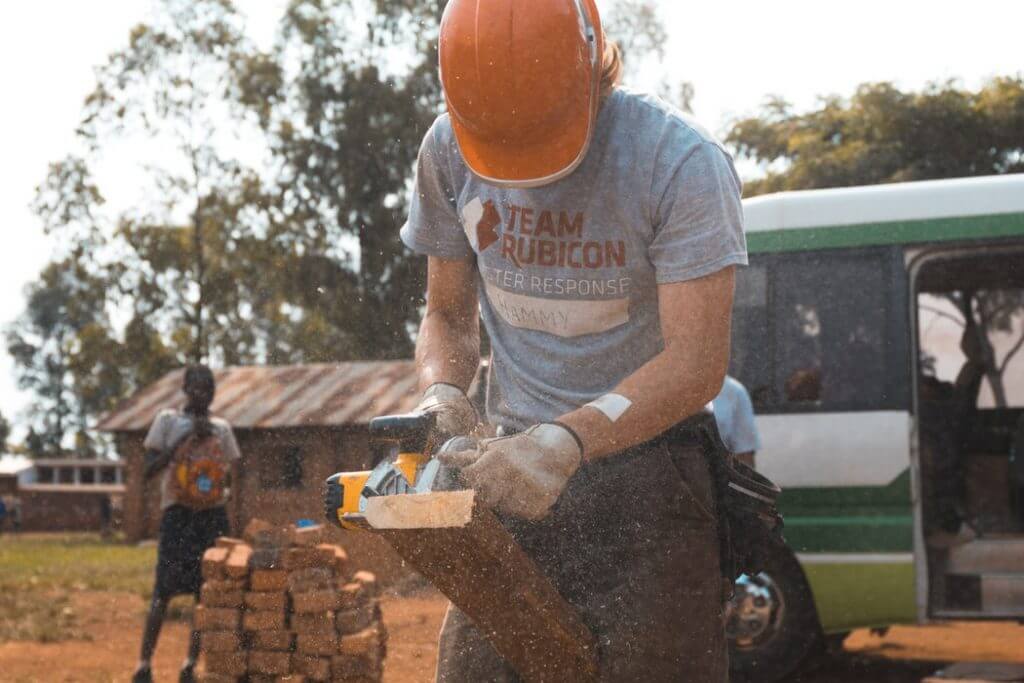
Yup, I agree. With futurism.com, you are scaling that pretty well, it’s quite a popular website. I see it all the time on social media. I was familiar with it before I even knew that you were behind it or involved. Can you share any stats behind the scope of the site?
Yes. Sure, I can share some of it. It’s only about a year and a half old and we’ve built a great team. Basically, it’s a media company for starters. We just crossed 4 million fan threshold on Facebook, we have a few 100,000 on Instagram and other social media areas. We also started a few sub-brands. We started this one called Virtuality which is all about virtual reality and videogames and virtual reality. We started another one called Explorist which is a little bit more science-based. We’re just expanding in social media and now on more traditional media as well. We recently started Futurism Studios, we’re starting to produce many documentaries. We’re looking at even getting into a television show in the near future. It’s been a fun ride. It’s very different from B2B things I’ve been doing in the past but it’s definitely been gratifying to be on the consumer side of things.
It’s quite a popular site too. I don’t know what the stats are or if you can share anything like how many users or visits or anything you get per month. Is this one of your biggest sites that you worked with?
Yeah, for sure. It’s been interesting. Actually, as a side note, I know that you’re into SEO. Yext, for instance, was always a challenge. I was in charge of SEO there as well, among other things, and it was always a challenge to drive people on that side. It’s fun now that all of our content is essentially, potentially viral to see it grow more organically that way. It’s really interesting. Again, looking back to the wire of what gets you through, I think being on the consumer side is another one of those things to consider previous to Futurism. I was briefly working on an app called Confide and again that was a lot of fun to talk to people when they’re using it and they know what it is. That’s a fun piece. Doesn’t necessarily get you through the hardest days but it’s definitely a nice perk.
You’ve been taking Singularity University’s executive programmer whatever they call it. You’re there for a week or 10 days. Could you tell our listeners a little bit about that?
Sure. Singularity University is one of the first precursors I would say or shoulders that we’re standing upon for Futurism. I guess it was Ray Kurzweil, Peter Diamandis and a few other co-founders got together at the bay area. They put together on these executive programs where they bring together a bunch of CEOs and walk through exponential technologies and what the impact is going to be for their companies and for society. Some of those areas are nanotech, biotech, AI, and robotics, things that are growing exponentially. It was a really fun experience if you ever get a chance to do it. For me, being an avid reader of a lot of these things, I was aware of a lot of techs but still, it was a fun environment to be in, and to hear the speakers live, they do a lot of field trips as well. Also, additionally, they have a summer program which I believe is free now. I think Google sponsored all the scholarships there but it’s much more competitive to get into and it tends to be more college student and grad students that spend a summer where they spend a month learning about these technologies and then another month or two trying to incubate and launch a company in one of those areas. Some of them spun out and continue to do well. It’s a really great program.
I’ve been thinking about going to the week-long program myself, the executive program. Sounds really cool.
Yeah. It’s fun. It’s a good time.
What are your most favorite exponential technologies? What are you most bullish about or most excited about?
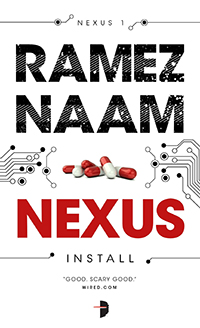
Oh, man. The one I’m most excited about, even though I don’t think it’s the most near term, it might be the farthest term. It’s augmenting human intelligence. It can be a little scary for some people but I think that there are few ways where the technologies where we can start to look at the potential of either adding a chip into the brain or if you ever read the book Nexus, that’s a great book that talks about this. If you can get an input or an output method into the brain either through neural dust or potentially you can go through the capillary systems with really thin nanowires. If you can read into and out of the brain and in that way interphase it with the computer, we have the potential capacity to increase our memory first, also our intelligence, and even our emotional intelligence because there’s a lot of evidence that show that it wouldn’t just be a super-smart autistic, you would also probably be more in touch with your sense of humor and love and all these things.
There’s a lot of worries these days about AI and bad AI and what would happen. I think this is probably our best and I think Elon Musk talks about this as well. This is probably our best offense against this, having a super-smart human that could counterbalance a potential AI or understand it. Of course, there’s risk involved there too. One of the most interesting recent experiments that I’ll just talk about on this before I jump off is there was a chip that was implanted in a rat brain and it was basically a prosthetic for the hippocampus. They designed the circuitries and it mirrored the hippocampus. The hippocampus is basically your memory center as far as they know. What they did was they took these rats and they damaged the hippocampus, imagine that the rat’s head, some sort of memory loss like an Alzheimer’s. Then they put the chip in there and it basically restored the rat’s memory, they were able to run the maze, etc. This was Berger out of MIT, it was his research.
Then the second thing he did was he took normal rats and put the chip back in without destroying the brains and the rat’s not only performed fine in the maze, they performed better in the maze. It gave them a super memory of sorts. They started to do human trials of this in the near future. Brian Johnson just funded a big initiative with a company called Kernel to pursue this in humans. First through helping Alzheimer’s victims and so on and so forth. I think this technology is really interesting and exciting. There’s also been some hypothesis that the hippocampus is actually part of the neocortex which is our thinking brain, the peak, or the pinnacle of the neocortex. If you think of it as a pyramid, the neocortex might build letters into words, words into sentences, sentences into paragraphs, and so on, and so forth, up the chain until you get to reasoning and emotion and love. Anyway, there is some thinking that the hippocampus might also be the seat of the highest level of intelligence or consciousness. If you are able to augment that with the chip and have some input and output, who knows, maybe you get some sort of magic to happen. But we will see what happens.
Interesting times, eh?
There’s a lot more near term stuff obviously like self-driving cars and other things and sensors and simple versions of AI that are going to be hitting us sooner than we think. That’s the big one, big crazy one. AR also is a pretty interesting one, Augmented Reality. Magic Leap is a really interesting one where apparently the demo is they sit you in a room, turn off the lights, then they turn on the lights and with your magic leap glasses on, you have to identify what in the room is real and what in the room is fake. There might be a lamp on the desk and you have to be able to tell if it’s real and fake. Essentially what it’s doing is projecting light into your eyeball and it’s so realistic that you can’t tell what’s real and fake. This allows you to start overlaying fake things onto the real world. I’ve heard recently that Apple’s also pursuing something similar.
It’s going to be a wild ride.
It gets interesting fast.
I know we’re out of time. Where would people take the next step to help your organization, Impact Network, or start their own nonprofit charity, whatever they’re passionate about, whatever topic or area? What will be the next step that you would recommend? A website for people to visit or some document to read or book?
Sure. As far as the things I’ve been talking about, obviously there’s futurism.com. This is the new site. Then impactnetwork.org, if you want to check out what’s going on over there. As far as looking at starting a nonprofit, I would think hard about what is motivating you and what you are passionate about and what’s going to be your big why. I would also take the time to try it out as far as volunteering for an existing organization, ask them questions about what are the challenges, what’s it like, and so on and so forth. There’s a lot of ways to test the waters in that regard.
For sure. Thank you, Dan. It’s inspiring to talk to you and I hope that our listeners take the next step and help your organization out or do something to make a difference for others. You’ve been an inspiration to me. We’ll catch you on the next episode. This is Stephan Spencer signing off.
Important Links
Connect with Dan Sutera
Tools/Apps
Organizations
People
